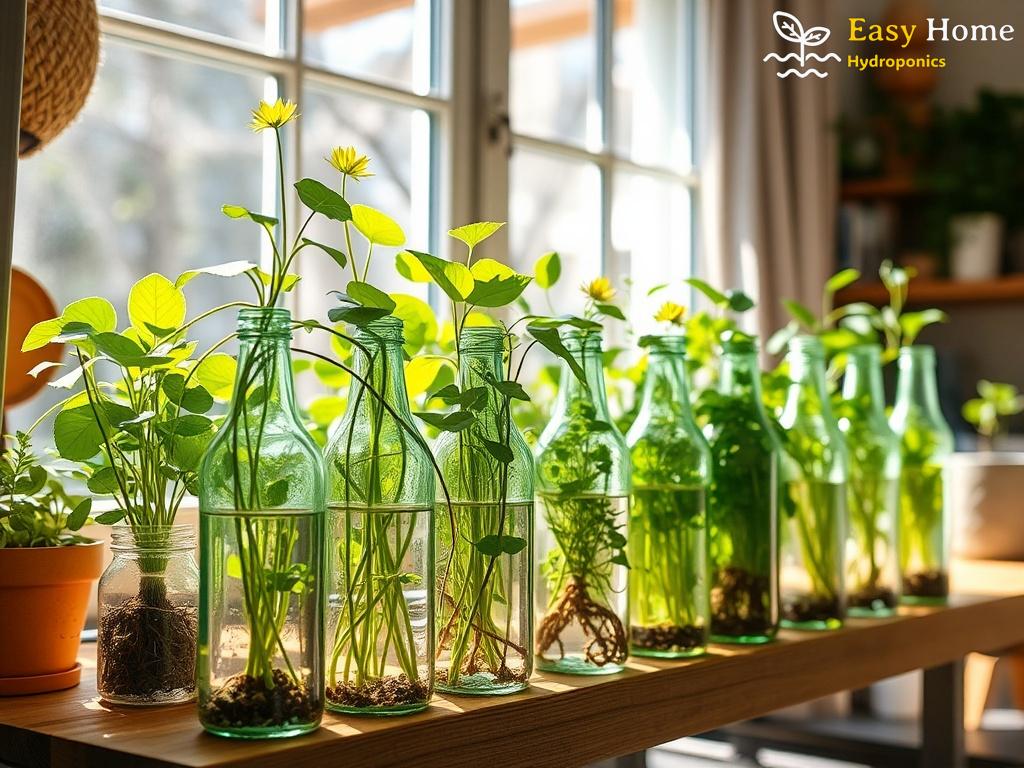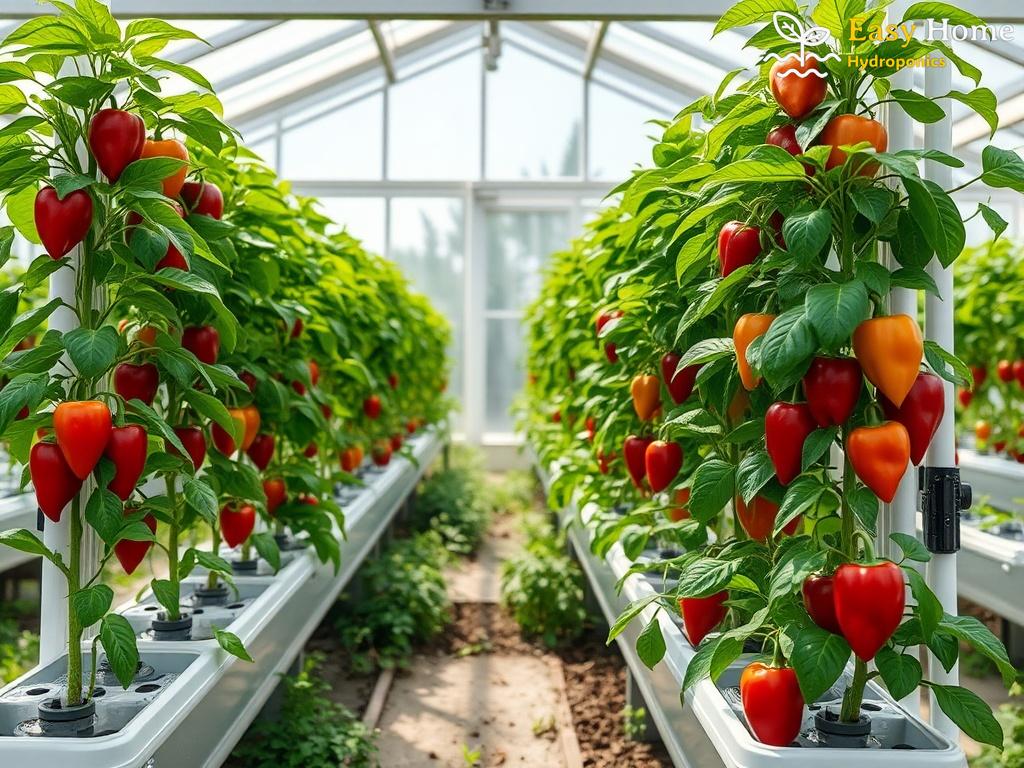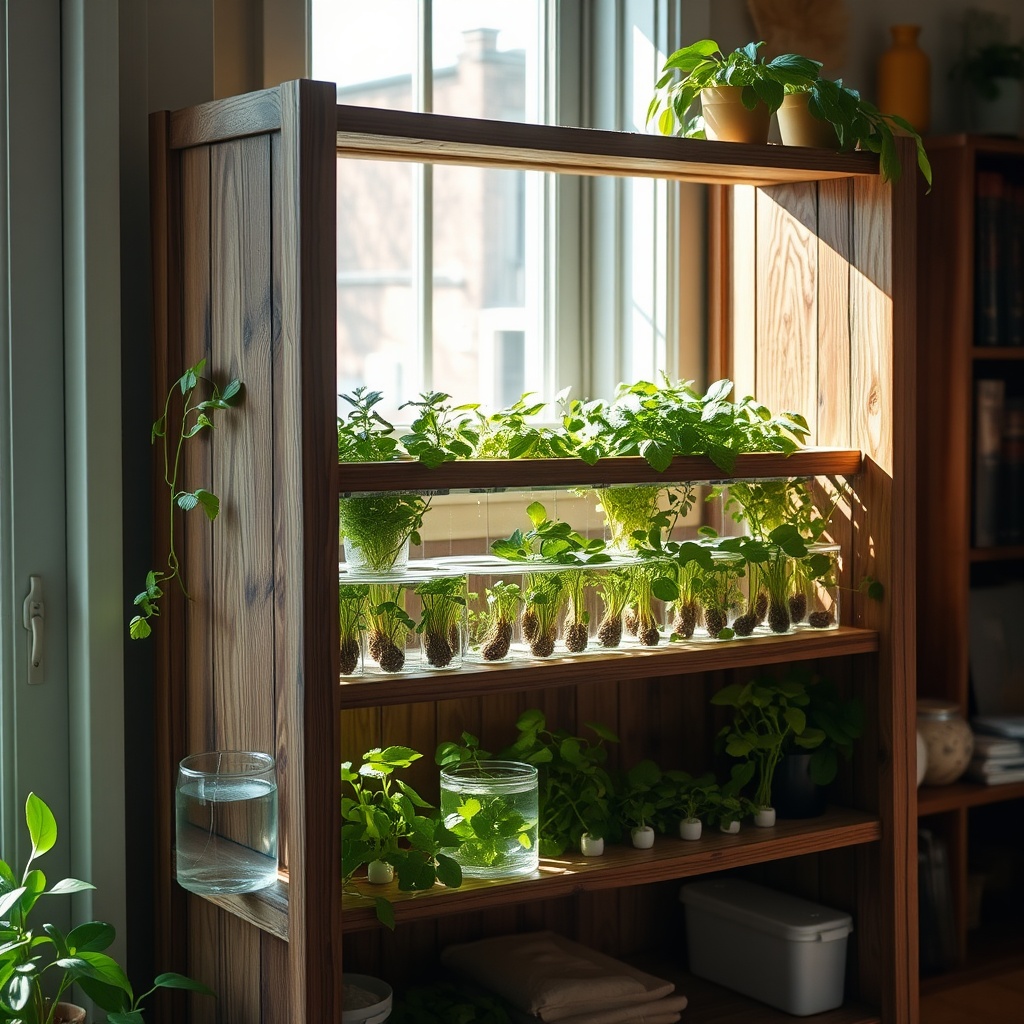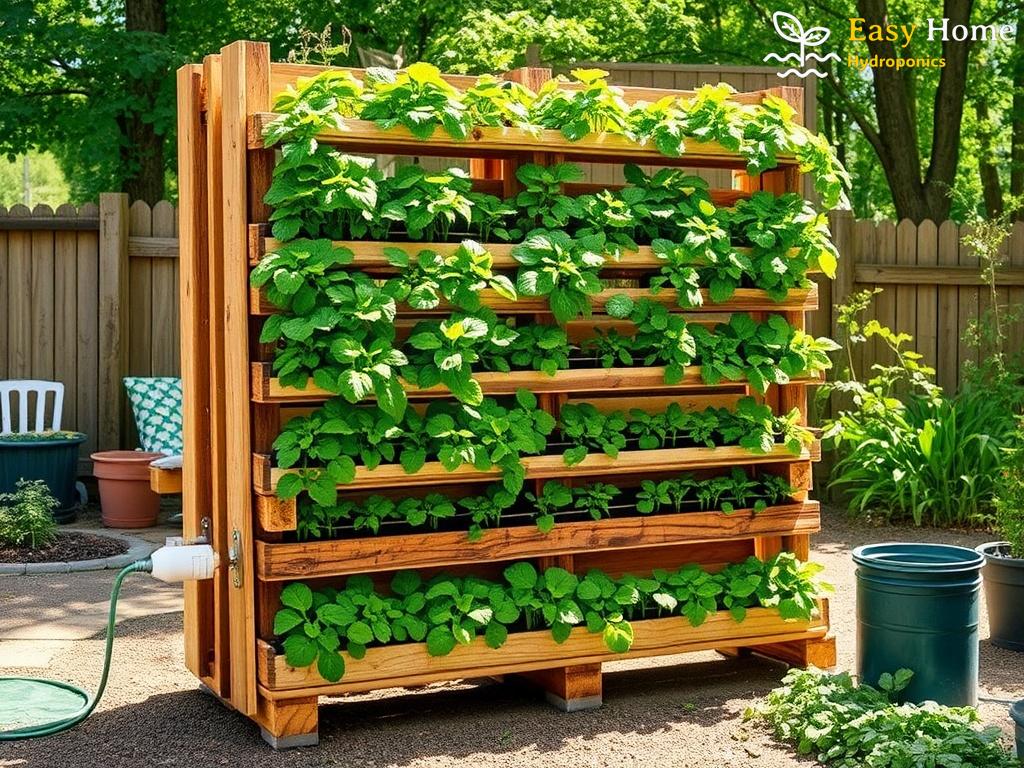Upcycling Magic: Transforming Glass Bottles into Garden Gems
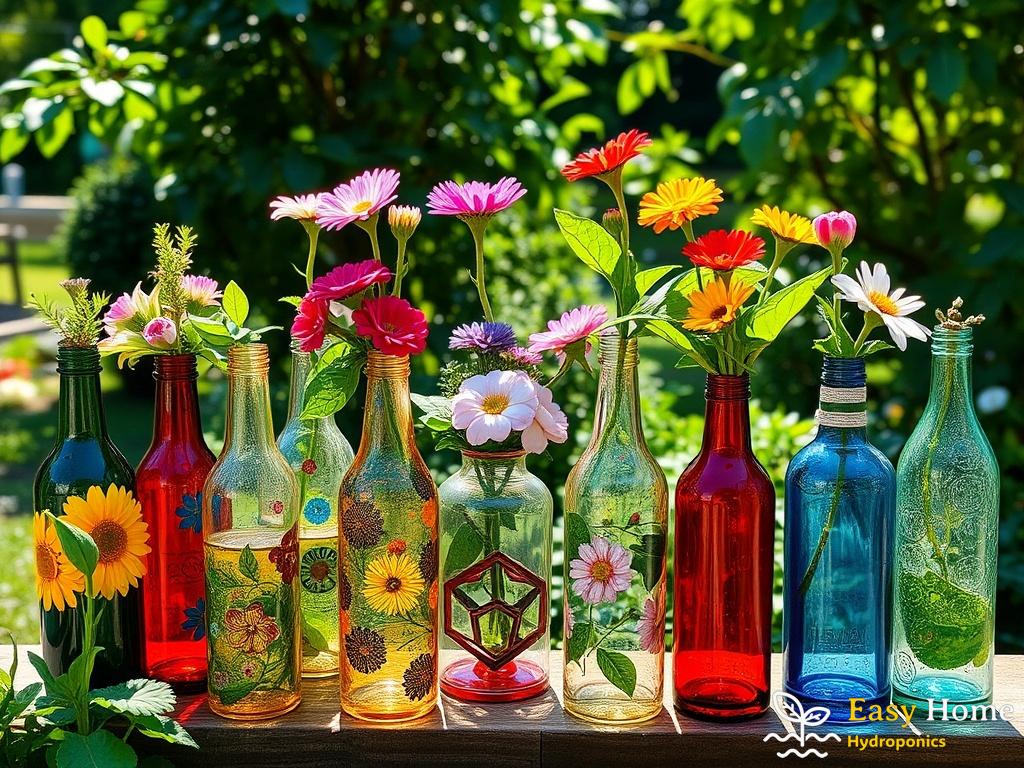
Embracing Sustainability in Your Garden
Imagine a garden bursting with vibrant greens, all thriving within the confines of recycled glass bottles. Hydroponics, the art of growing plants in nutrient-rich water, meets the charm of upcycling in a delightful fusion of eco-friendliness and creativity. This unique approach not only helps reduce waste but also adds a touch of magic to your gardening experience.
The Alchemy of Bottle Transformation
Transforming ordinary glass bottles into garden gems is an inspiring process. With just a few simple steps, you can create a hydroponic system that not only looks stunning but also provides fresh produce right at your fingertips. Here’s a handy guide to help you embark on this enchanting journey:
- Gather Your Materials: Collect various sizes of glass bottles, a cutting tool, and a hydroponic nutrient solution.
- Prepare the Bottles: Thoroughly clean and cut the bottles to create a suitable planting area.
- Create Drainage: Ensure your bottles have proper drainage to prevent waterlogging.
- Choose Your Plants: Select herbs or leafy greens that thrive in hydroponic systems, such as basil, mint, or lettuce.
- Mix Nutrients: Prepare your hydroponic solution as per the instructions to nourish your plants.
- Plant and Water: Add your plants to the bottles and fill them with the nutrient solution, ensuring roots are submerged.
Why Choose Hydroponics with Recycled Bottles?
Opting for a hydroponic garden made from recycled glass bottles offers numerous benefits that go beyond just aesthetics. Here’s a comparison of traditional gardening versus hydroponic gardening using recycled materials:
| Aspect | Traditional Gardening | Hydroponic Gardening |
|---|---|---|
| Space Efficiency | Requires more land | Can thrive in small spaces |
| Resource Use | Heavily reliant on soil and water | Uses less water and no soil |
| Growth Rate | Slower due to soil nutrients | Faster growth with direct nutrient access |
| Environmental Impact | Higher due to fertilizers | Lower with organic nutrients |
By choosing hydroponics, you not only embrace sustainability but also enjoy a rewarding gardening experience that yields fresh produce and enhances your living space.
Hydroponics 101: Understanding the Soil-Free Revolution
As we delve into the world of hydroponics, it’s essential to comprehend the underlying principles that make this soil-free gardening method not only viable but also revolutionary. Hydroponics eliminates the traditional reliance on soil, allowing plants to draw nutrients directly from a nutrient-rich water solution. This innovative approach opens up a realm of possibilities for urban gardeners and eco-conscious individuals alike, especially when combined with the art of upcycling glass bottles.
The Science Behind Hydroponics
At its core, hydroponics is a method of growing plants without soil. Instead, it relies on a nutrient solution that is delivered directly to plant roots. This technique fosters an environment where plants can grow faster and more efficiently, as they absorb nutrients more readily. Understanding the science behind hydroponics not only enhances your gardening experience but also encourages sustainable practices in your home.
A Closer Look at Hydroponic Systems
When considering hydroponics, it’s vital to explore various systems that can be implemented using recycled materials. Each system has its unique advantages and can be tailored to fit your specific gardening goals. Below is a comparison of popular hydroponic systems that can be easily adopted using glass bottles:
| Hydroponic System | Description | Advantages |
|---|---|---|
| Deep Water Culture (DWC) | Plants are suspended in a nutrient solution, with roots submerged. | Fast growth, easy to set up. |
| Nutrient Film Technique (NFT) | A thin film of nutrient solution flows over the roots. | Efficient use of water and nutrients. |
| Wick System | Nutrients are drawn up to the plant roots through a wick. | Low maintenance, simple design. |
The Benefits of Soil-Free Gardening
Transitioning to a hydroponic garden made from recycled glass bottles is not just an eco-friendly endeavor; it’s a gateway to a multitude of benefits. By embracing this soil-free revolution, you unlock advantages such as:
- Environmental Impact: Reduces the need for chemical fertilizers and promotes the use of organic nutrients.
- Space Efficiency: Perfect for urban gardening, allowing you to grow fresh produce in limited spaces.
- Water Conservation: Uses significantly less water compared to traditional gardening methods.
- Faster Growth Rates: Direct access to nutrients accelerates plant growth and yields.
Designing Your Bottle Garden: Layouts and Aesthetics
Creating a hydroponic garden from recycled glass bottles is not just about sustainability; it’s also an opportunity to unleash your creativity. The design of your garden can transform a simple space into a vibrant green oasis, reflecting your personal style while maximizing the potential of your plants. Whether you have a balcony, patio, or a small corner in your home, the layout and aesthetics of your bottle garden can enhance the beauty of your surroundings.
Crafting a Vision: Layout Considerations
When it comes to designing your hydroponic garden, envision how you want it to look and function. Consider the amount of sunlight your space receives, as this will influence the arrangement of your glass bottles. An effective layout not only optimizes light exposure but also allows for easy access to your plants. A tiered design can create an eye-catching vertical garden, perfect for maximizing limited space while ensuring that all plants receive adequate sunlight.
Grouping plants with similar water and light requirements can further enhance the efficiency of your garden. For instance, herbs like basil and mint thrive together, creating a lush, aromatic corner. Integrating various heights and bottle sizes can add visual interest and depth, drawing the eye and making your garden a focal point of your space.
From Functional to Fabulous: Aesthetic Elements
Once you have determined the layout, it’s time to infuse your garden with personality. The beauty of using glass bottles lies in their versatility. You can leave them clear for a minimalist look or paint them in vibrant colors to match your decor. Adding decorative elements, such as stones or pebbles at the base of the bottles, can enhance drainage while providing a natural aesthetic that complements the greenery above.
Consider using twine or jute to create rustic hanging arrangements, where bottles dangle gracefully from hooks or beams. This not only saves space but adds an enchanting touch to your garden. Incorporating lights around your bottle garden can also create a magical evening ambiance, transforming your space into a cozy retreat.
Ultimately, the design of your hydroponic garden should resonate with your personal style while ensuring that it remains functional. By considering both layout and aesthetics, your recycled glass bottle garden can become a stunning centerpiece that invites admiration and promotes sustainability.
Choosing the Right Plants: What Thrives in Glass?
Planting Possibilities in Glass Bottles
When embarking on the enchanting journey of creating a hydroponic garden from recycled glass bottles, one of the most crucial decisions you will face is selecting the right plants. Not all plants are equal when it comes to thriving in a soil-less environment. You’ll want to choose species that not only adapt well to hydroponics but also flourish within the specific confines of your unique glass bottle setup. By doing so, you will create a lush and productive garden that delights the senses and sustains your household with fresh produce.
Herbs: The Aromatic Champions are among the best candidates for your hydroponic garden. Varieties like basil, mint, and parsley not only grow quickly but also require minimal space, making them ideal for bottle gardens. These herbs enjoy the nutrient-rich water and can thrive in the limited environment provided by glass bottles. Moreover, their delightful scents and flavors can elevate your cooking, making your garden a source of culinary inspiration.
Leafy Greens: Nutrition in Every Leaf
In addition to herbs, leafy greens such as lettuce, spinach, and kale are exceptional choices for your hydroponic setup. These greens are known for their fast growth rates and high yield, offering a sustainable source of nutrition. With the right hydroponic nutrient solution, these plants can achieve astonishing growth, providing you with fresh salads year-round. Their compact root systems make them particularly well-suited for the confined space of glass bottles, allowing you to maximize your garden’s potential.
Fruiting Plants are another category to consider, though they require more attention. Varieties like cherry tomatoes and strawberries can also be grown in hydroponic systems, but they demand more light and nutrient management than their leafy counterparts. These fruits can turn your garden into a vibrant display of color while offering a sweet harvest. However, ensure that your glass bottle setup allows for adequate support for these plants, as they may need to be staked or guided as they grow.
Nurturing Your Green Companions
As you select the plants for your hydroponic garden, it’s essential to consider their light and water requirements, as these factors directly influence their growth. Grouping plants with similar needs can lead to a healthier garden overall. For instance, if you choose to grow basil and lettuce together, they will complement each other’s light and nutrient needs, creating a harmonious environment within your glass bottles. Utilizing a nutrient solution tailored to the specific plants you’ve chosen is also vital. This ensures that each plant receives the essential minerals and vitamins necessary for robust growth and development.
Ultimately, the key to a thriving hydroponic garden lies in your plant selections. By choosing herbs, leafy greens, and even fruits that thrive in a glass environment, you will cultivate not just a garden, but a sustainable ecosystem that enhances your home. So, gather your bottles, get creative with your plant choices, and watch as your hydroponic garden flourishes in a spectacular display of nature’s beauty.
Maintaining Your Hydroponic Oasis: Tips for Success
Nurturing Your Hydroponic Ecosystem
Creating a hydroponic garden from recycled glass bottles is just the beginning of your sustainable journey. To truly transform your setup into a thriving oasis, regular maintenance is essential. This not only involves monitoring plant health but also ensuring that your nutrient solution remains balanced and your plants receive adequate light and care. Establishing a routine will help you enjoy the fruits of your labor while keeping your hydroponic system in optimal condition.
Water Quality and Nutrient Management
The heart of any hydroponic system lies in its nutrient solution. Regularly check the pH levels of your water, aiming for a range between 5.5 and 6.5, as this ensures that your plants can absorb essential nutrients effectively. A nutrient-rich water solution is fundamental for the growth of your plants, and to achieve this, you must replace or refresh the solution every two weeks. This practice not only prevents nutrient depletion but also minimizes the risk of algae growth, which can compete with your plants for resources. When mixing your nutrient solution, consider the specific needs of your plants; leafy greens may require different nutrient compositions than herbs or fruiting plants.
Light and Environment: The Key to Flourishing Plants
Light is a vital component of your hydroponic garden’s success. Ensure your plants receive at least 12-16 hours of light daily, which can be achieved through natural sunlight or grow lights. Position your bottles to receive optimal sunlight, or adjust your artificial lights to mimic the sun’s journey throughout the day. Additionally, be mindful of the temperature and humidity levels in your gardening space. A temperature range of 65-75°F is ideal for most hydroponic plants. Regularly monitoring these environmental factors will help prevent stress on your plants, allowing them to flourish.

